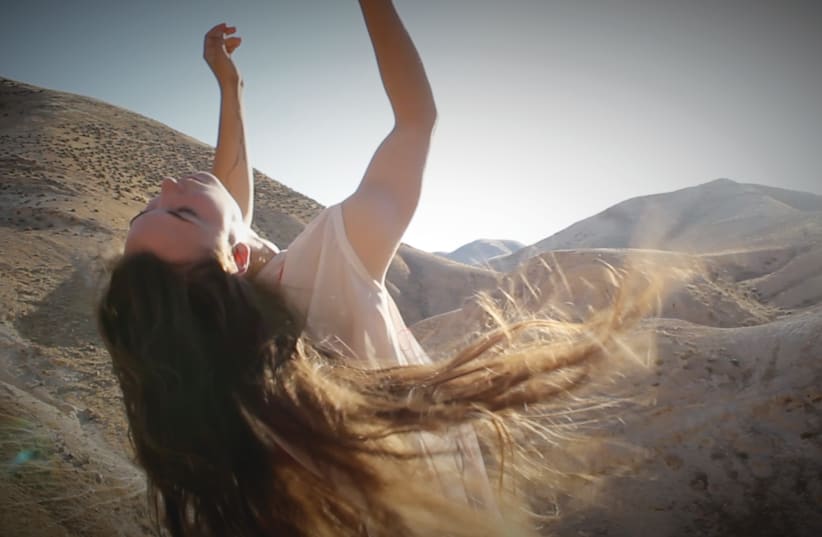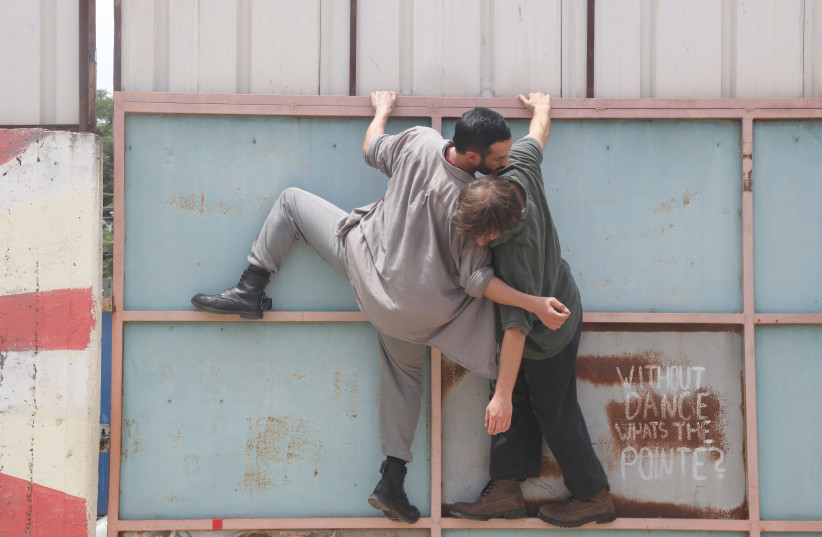Over the next three days and just in time to ring in the new year, two distinguished landmarks of Jerusalem – the Tower of David museum and the Anna Ticho House – are going to be transformed into hubs of movement and contemporary dance, courtesy of the annual From Jaffa to Agripas dance festival.
And if you thought for a second that these two museums might not be the most natural habitats for dance performances or for dancers, you might want to take into account that over the past eight years, the festival usually took place among the crowded and colorful alleyways of the capital’s Mahane Yehuda market.
The ninth edition of the festival, which is spearheaded by artistic director Elad Schechter in 2014, is pivoting the artistic event into new and previously uncharted territories. Currently home to changing exhibitions of contemporary art, the Anna Ticho House is a historical structure that was built outside the Old City walls during the 1860s and now functions as a museum under the auspices of the Israel Museum. The Tower of David, the ancient citadel located near Jaffa Gate, is also not the first theater-like location that would spring to mind when one ponders the different stages of the capital.
Schechter, a dancer, choreographer and founder of Jerusalem’s c.a.t.a.m.o.n Dance Group, tells The Jerusalem Post that the decision to turn away from the market “stemmed from a desire to research a new idea. At its heart, the festival was and remains dedicated to the presentation of contemporary dance in alternative spaces, only now we’re embarking on a different adventure.”
"At its heart, the festival was and remains dedicated to the presentation of contemporary dance in alternative spaces, only now we’re embarking on a different adventure."
Artistic director Elad Schechter
When I suggest that some of the charm of the previous lineups was the surprise encounters between random passersby who were busy shopping for groceries in the market and the live performances, Schechter admits that this was a feature of the festival that he had to give up when curating this year’s program. “We’re certainly not the only contributors to the gentrification of the area but we couldn’t help but notice that we had become too successful in doing what we set out to do initially.”
The advantage of the previous format, Schechter continues, “was that unpredictable meeting between people and contemporary dance. Some people had never seen contemporary dance prior to their experience with the festival and thanks to it, they fell in love with the medium.”
Nonetheless, there was also a flipside that became more obvious as the years passed: “Most dance works are narrative-driven in the sense that they have a beginning, a middle and an end,” Schechter explains. “When audiences watched the works in the market, they were often exposed to them in one stage or another, so they couldn’t get the full picture.”
Reshuffling the cards
In close to a decade of operating on the market grounds, the festival produced some 70 new dance pieces by local and international dance makers: “From long, durational works in the middle of the market to tours and dance pieces that were presented in low-cost restaurants and butcher’s shops,” Schechter recalls with a smile. This year, he says, “is all about reshuffling the cards and taking up a new challenge. We know what our identity is but now we want to try and present dance pieces that think of the body in space differently and relate to Jerusalem differently.”
One such piece set to premiere in the festival is Ofrenda, a new video dance by Mexican choreographer Claudia Lavista, featuring dancer Julia Mezhetskaya. Lavista, who was hosted by the c.a.t.a.m.o.n Dance Group as part of the Jerusalem International Fellows Program, shot the work in the Judean desert and at the Tower of David museum, where it will be exhibited in a continuous loop. The work explores the choreographer’s loss and grief following the death of her father a year ago.
Another site-specific work that dives into the topography of the citadel is Fear of heights, a duet by choreographer Maayan Liebman-Sharon. “This piece was born out of Liebman-Sharon’s research into bird migration,” shares Schechter. “She started creating it in a citadel in the Czech Republic, where she was staying for an artist residency and continued adapting and developing it to suit the Tower of David. The work moves within the space and encourages viewers to follow the dancers.”
The festival also offers a launchpad for younger choreographers, such as dancer and creator Irad Avni and Batsheva dancer Beatrice Larrivee. The former will present Habatul (The Virgin), and Schechter proudly calls him “one of the youngest and freshest voices collaborating with us this year.” Avni’s piece, he reveals, “discusses male virginity and gender in a very refreshing way. Irad wears a fin, kind of like a mermaid, and the whole thing takes place against the backdrop of the cistern at the Tower of David.”
Meanwhile, in She Looks Like She’d Be an Animal In Bed, a duet for two women, Canada-born Larrivee relates to the post-me-too period and explores how women’s bodies should be presented in the public space. Larrivee will present her work at the Ticho House, in a balcony on the grounds that used to serve as the bedroom and living room of Anna Ticho and her husband.
The connection between Jerusalem and the human body
Schechter, himself, is going to present three works he choreographed at the festival: Sweets, Somewhere and Premier. The first is a work he created last year and which had already premiered at a new Jerusalem dance festival he established, titled Room Service. “The work grapples with the idea of obsessions. It’s performed by a plus-size dancer and will be presented at the Ticho House in a small room that resembles a hotel room because it is meant for a small audience – only 15 people can see it at a time.”
The second, Somewhere, is a duet performed by dancers Korina Fraima and Ido Gidron, which Schechter first showed at the Between Heaven and Earth Festival, this year. The work, which is slated to embark on an extensive world tour in 2023, is an improvisation-based piece with set scores that Schechter calls highly personal and which was inspired, among other things, by Italian author Italo Calvino’s poetic oeuvre The Invisible Cities.
Lastly, Premier is a work that technically first premiered in 2018. The solo, performed by Muslim dancer Rand Taha, is a creation the choreographer says he tends to think of as a duet “because it explores the complex relationship between choreographer and dancer, asking how each of us can bring our own world into the dance piece.”
Schechter and Taha met when she was studying at the Jerusalem Academy of Music and Dance and he was invited to create a dance piece for the university ensemble. The two hit it off and the strong connection they forged led Schechter to invite Taha to create this piece with him. “Through this work, we wanted to ask: How can it be that two individuals who grew up, were raised and currently reside in the same city still live in totally different worlds?”
As he gears up for the performances and the subsequent all-night party festival-goers are invited to join, Schechter muses that “the shift into closed spaces changed our strategic and curatorial thinking. Through them, we’re exploring anew the connection between Jerusalem and the human body.”













